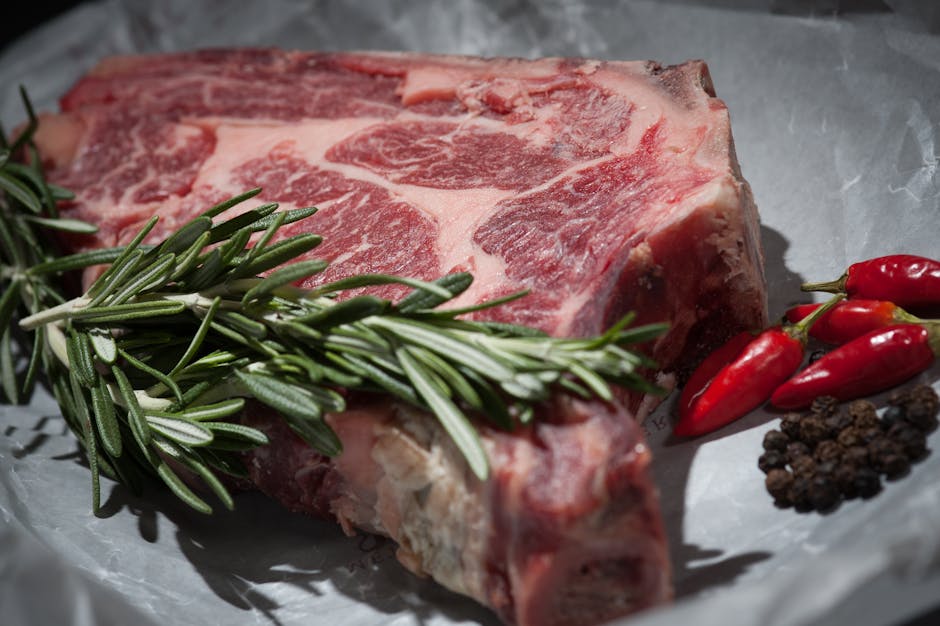Introduction
Beef, a culinary cornerstone enjoyed globally, is much more than just a delicious meal. It’s a significant source of protein, essential nutrients, and a cultural staple in many societies. From succulent steaks to hearty stews, beef offers versatility and flavor that has captivated palates for centuries. This article explores the various aspects of beef, from its nutritional benefits and different cuts to sustainable practices and cooking tips.
Main Sections
Understanding Beef Cuts
Navigating the world of beef cuts can be daunting. Each cut boasts unique characteristics in terms of tenderness, fat content, and flavor profile. Knowing the differences empowers you to choose the right cut for your desired culinary outcome.
- Tenderloin: The most tender cut, ideal for grilling or roasting. Known for its melt-in-your-mouth texture.
- Ribeye: A rich, flavorful cut with marbling throughout, perfect for grilling or pan-searing.
- New York Strip: A well-balanced cut with a good combination of tenderness and flavor, great for grilling.
- Sirloin: A leaner cut than ribeye or strip, offering a good balance of flavor and price. Suitable for grilling or roasting.
- Chuck: A tougher cut but packed with flavor. Best suited for slow cooking methods like braising or stewing.
- Brisket: Another tough cut that becomes incredibly tender and flavorful with slow cooking, often used for smoking.
- Ground Beef: Versatile and widely used in various dishes, from burgers to sauces. Choose the lean percentage based on your preferences.
Nutritional Benefits of Beef
Beyond its delicious taste, beef provides several essential nutrients that contribute to overall health.
- Protein: Essential for building and repairing tissues, and supporting immune function.
- Iron: Crucial for transporting oxygen throughout the body and preventing anemia.
- Zinc: Important for immune function, wound healing, and cell growth.
- Vitamin B12: Vital for nerve function and red blood cell formation.
- Creatine: Supports muscle growth and strength, particularly beneficial for athletes.
Sustainable Beef Practices
The environmental impact of beef production is a growing concern. Sustainable practices aim to minimize the industry’s footprint.
- Regenerative Grazing: Utilizing grazing practices that improve soil health and sequester carbon.
- Water Management: Implementing efficient water usage strategies to conserve resources.
- Reducing Methane Emissions: Exploring innovative feeding strategies and technologies to lower greenhouse gas emissions.
- Supporting Local Farmers: Choosing locally sourced beef to reduce transportation costs and support sustainable farming communities.
- Grass-Fed Beef: Often raised with more sustainable practices, though not always a guarantee. Look for certifications and verified farms.
Cooking Beef to Perfection
Mastering the art of cooking beef can elevate your culinary skills. Here are some essential tips:
- Choose the Right Cut: Match the cut to your cooking method (e.g., tenderloin for grilling, chuck for braising).
- Season Generously: Use salt, pepper, and other seasonings to enhance the flavor of the beef.
- Bring to Room Temperature: Allow the beef to sit at room temperature for 30-60 minutes before cooking for even cooking.
- Use a Meat Thermometer: The most accurate way to determine doneness. Refer to a temperature chart for desired levels (rare, medium-rare, medium, etc.).
- Rest the Beef: Allow the cooked beef to rest for 5-10 minutes before slicing to retain juices.
- Slice Against the Grain: This makes the beef more tender and easier to chew.
Conclusion
Beef, when consumed thoughtfully, can be a delicious and nutritious part of a balanced diet. By understanding different cuts, recognizing the nutritional benefits, supporting sustainable practices, and mastering cooking techniques, you can fully appreciate the versatility and value of this popular food. From a simple burger to an elegant roast, beef continues to hold a special place in cuisines around the world.
